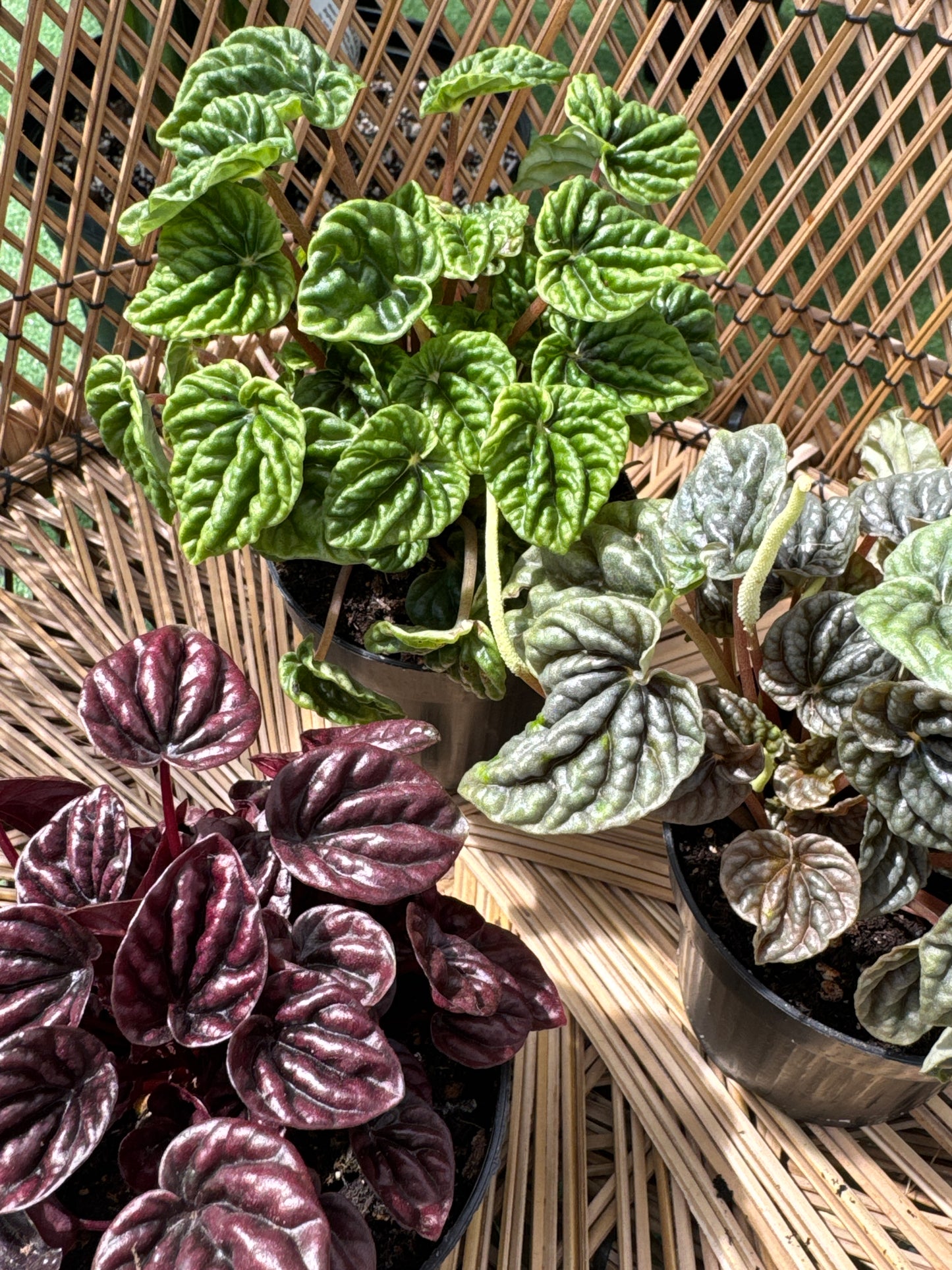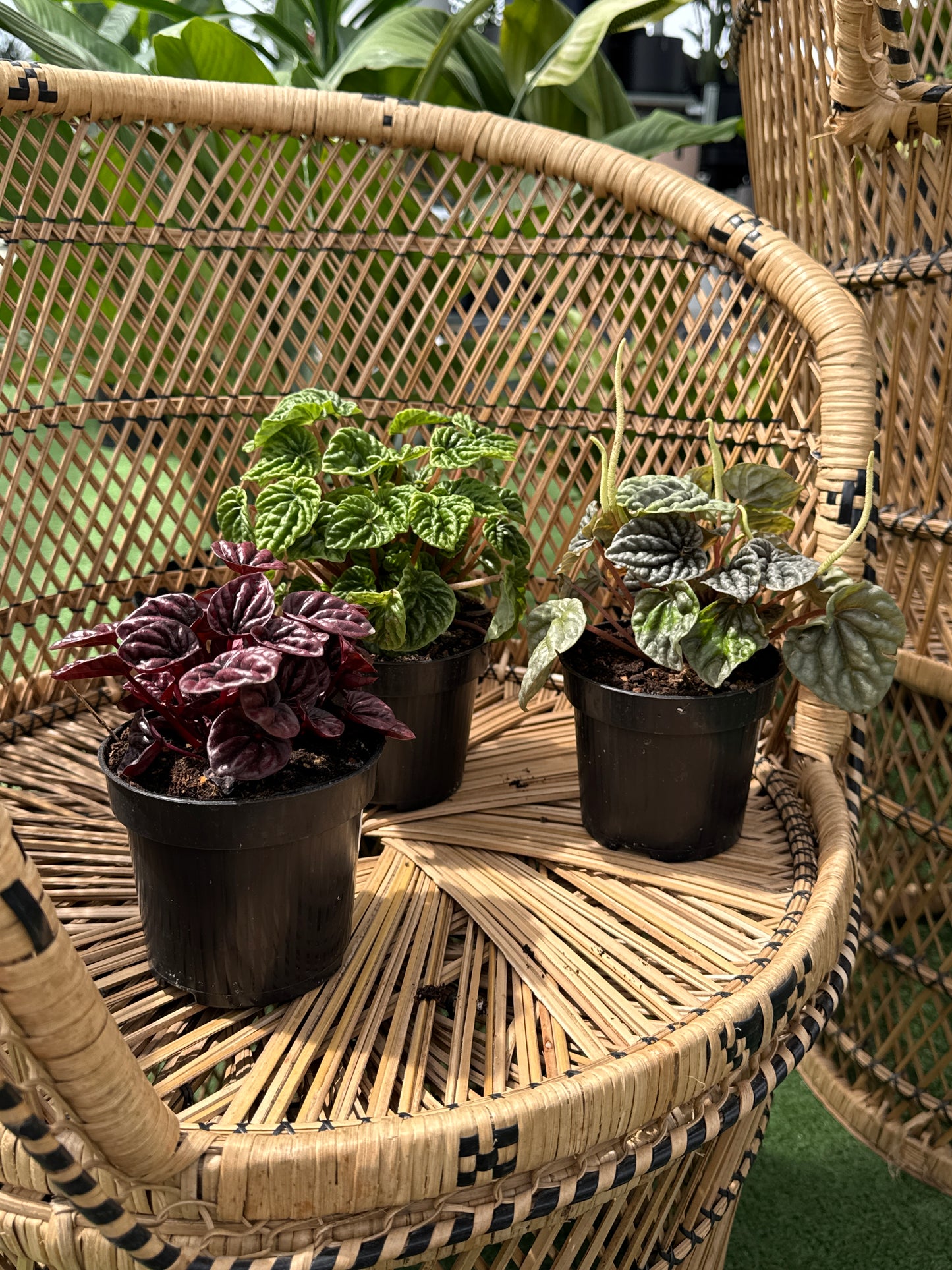1
/
of
4
Peperomia Ripple (Peperomia caperata)
Peperomia Ripple (Peperomia caperata)
Peperomia Ripple (Peperomia caperata)
Add a touch of texture and elegance to your indoor collection with the Peperomia Ripple, a compact tropical beauty adored for its deeply ruffled, heart-shaped leaves. Ranging from rich green to purplish tones, its glossy, rippled foliage catches the light beautifully—creating a gemstone-like shimmer that elevates any small space.
Perfect for desks, windowsills, or decorative plant groupings, this tidy, low-maintenance plant offers both sculptural interest and ease of care. Pet-safe and adaptable, Peperomia Ripple thrives in bright, indirect light, making it a favorite for beginners and collectors alike.
Sizing Description:
Small: 4" / 10cm pot diameter
Regular price
$12.99
Regular price
Sale price
$12.99
Unit price
/
per
Couldn't load pickup availability
Sun Requirements ▾
Prefers bright, indirect light.
Tolerates medium light and even some low light settings
Avoid direct sunlight, which can fade or scorch the textured leaves
Best near an east or north-facing window, or under grow lights
Watering Instructions ▾
Allow the top 1–2 inches of soil to dry out between waterings.
Water thoroughly, then let excess water drain
Avoid letting it sit in water to prevent root rot
More drought-tolerant than many tropical plants—better to underwater than overwater
Care Tips ▾
Soil:
Thrives in a light, airy, and well-draining mix.
Use a peat-based houseplant mix with added perlite or sand
Orchid bark or coco coir can help improve drainage
Ensure the pot has drainage holes to avoid soggy roots
Fertilizer:
Feed monthly during the growing season (spring and summer).
Use a balanced, diluted liquid fertilizer
No need to fertilize in the fall and winter months when growth slows
Avoid overfertilizing, which can cause leaf burn or distortion
Humidity:
Appreciates moderate humidity but adapts well to average indoor levels.
Keep away from heating vents and cold drafts
Group with other plants or use a humidity tray if your home is very dry
Occasional misting can help, but isn’t required
Share











